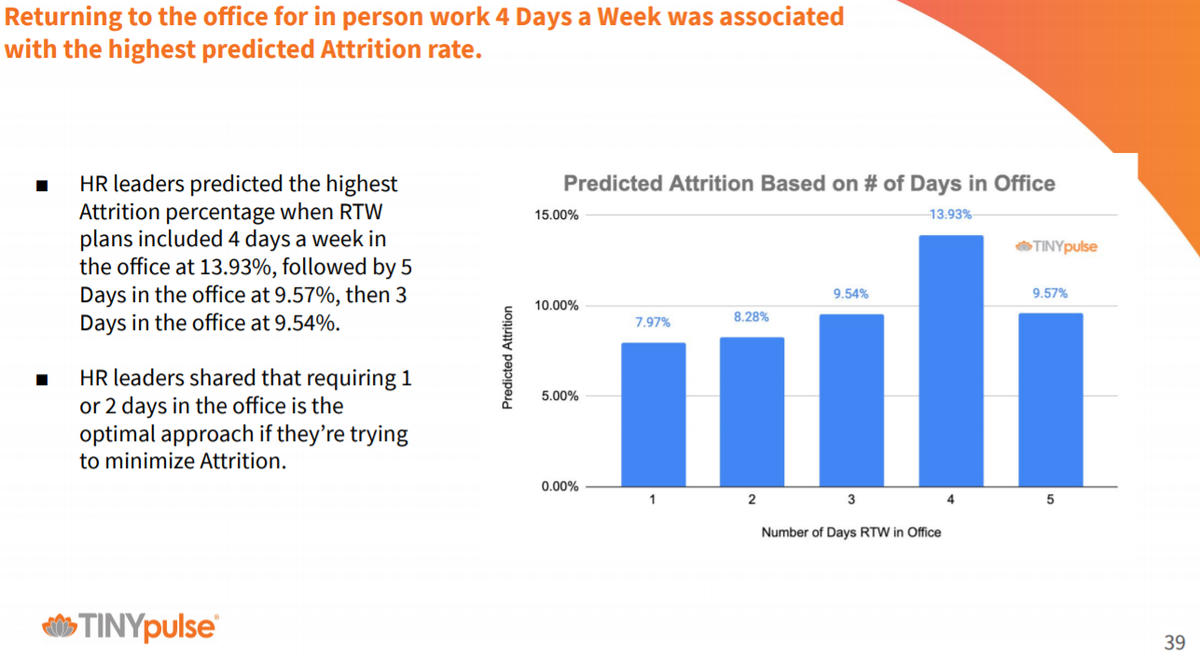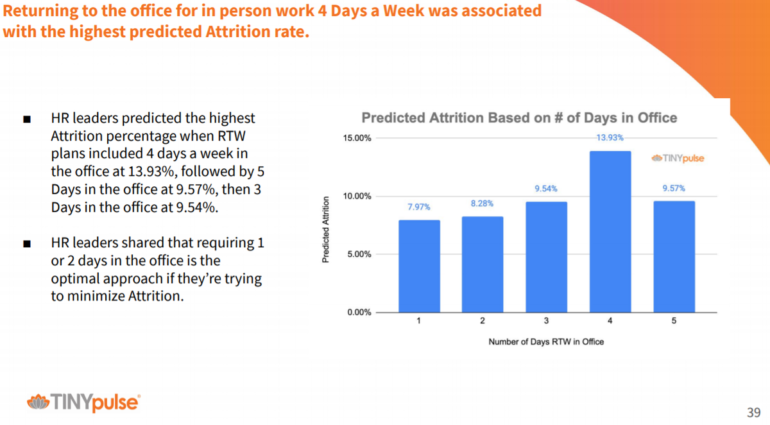The great office reopening is underway as employees head back to work after 18 months of working from home. This migration is expected to result in a new normal of hybrid work, but there is a bevy of questions to ponder as this grand experiment kicks off.
Hybrid work is expected to be the new normal, but there are a few firms such as Morgan Stanley and Goldman Sachs that expect everyone back in the office every day.
The edict from these two financial giants boils down to this: Get your asses back to the office. We’ll see how the Morgan Stanley and Goldman Sachs approach goes and how many employees rivals ultimately poach, but that’s one end of the spectrum. On the other end of the hybrid work spectrum are companies like Atlassian, which plan to use their remote work DNA to poach talent. Most companies are falling somewhere in the middle with a hybrid approach.
In other words, the rest of 2021 will be one giant experiment on hybrid work, productivity, employee/ employer leverage and management.
Here are some data points to ponder:
A TinyPulse survey of HR leaders found that 62.8% saw hybrid work as the most productive approach for their companies.Microsoft Research found that more than 40% of the global workforce is considering leaving their employer in 2021. TinyPulse’s survey found that more than 68% of respondents expected attrition would be between 0% and 9% once COVID-19 restrictions are lifted. Talk about disconnects.Global Workplace Analytics projects that 25% to 30% of the workforce will work from home multiple days a week by the end of 2021.
Among the key questions during this great work experiment:
Will companies be data-driven about hybrid work, remote work and in-person?
By most counts, productivity improved amid remote work spurred by the COVID-19 pandemic. However, Microsoft Research found that 54% of employees are overworked, and 39% feel exhausted. The productivity signals from Microsoft 365 indicate digital overload as Microsoft Teams meetings more than from February 2020 to February 2021, and email and document collaboration has surged. Simply put, the workday is intense.
What remains to be seen is whether companies will handle a productivity dip. Companies say they care about employee wellbeing, but Microsoft Research found that one in five global respondents say their employer doesn’t care about their work-life balance.
Companies that demand all in-person work are likely ignoring productivity gains. If companies go hybrid and see productivity fall (likely due to in-person open floor plans), will they move the pendulum more toward remote work? Companies always say they’re data-driven until they disagree with the data.
This data-first approach to the new normal work will be key to answering the biggest return to work question: Does corporate culture truly benefit from in-person work, or is this about preserving control and micromanagement?
Has the labor market fundamentally changed?
It’s clear that employees are looking at other opportunities. My working theory is that the great resignation chatter is overblown, but employees now see careers differently. Is the corporate climb worth it, or does your portfolio and wellbeing matter more? Forward-looking companies were betting on these portfolio workers more because more of us are thinking like freelancers.
April Rinne, a change navigator, is publishing a book called Flux: 8 Superpowers for Thriving in Constant Change that argues in part that workers are aiming to build portfolio careers that mesh their personal and professional lives better. Indeed, TinyPulse’s survey found that 39% of HR leaders found it more challenging to fill open roles after the pandemic. HR leaders also predicted the highest attrition when return-to-work plans include 4 days in the office. Two days in the office minimizes attrition.

How do diversity and inclusion affect the hybrid work approach?
Many companies are planning on a return-to-work plan that revolves around big cities. The problem? The talent of lesser means doesn’t have the parental help or bank account to float a move to San Francisco or New York. Remote work opened up diversity for some companies, and much of that work was remote. Another inclusion thread to ponder: Parents. The TinyPulse survey found that single HR parents with children were the least favorable about returning to in-person work. HR leaders with children and a partner had the most favorable attitude about returning to work. And one more thread to ponder: Introverts. Remote work and Zoom leveled the face time playing field. Offices are the domain of extroverts.
How does vaccine management evolve?
Employer mandates for vaccines vary, but 48% of organizations per the TinyPulse survey are encouraging vaccines. 28% of HR leaders didn’t have a vaccine policy, according to TinyPulse. Either way, vaccine management isn’t going away as a workflow tool, given variants are emerging.
At what point do the CFOs get involved?
For now, business travel and office reopenings are big deals. Its happy hour meets high school reunion time. But hybrid work plans need less real estate. CFOs are signing off on travel and office use now, but as soon as companies get squeezed on margin, these feel-good efforts may be shelved. It’s hard to justify the pre-pandemic commercial real estate footprint today.
What’s a commute worth? Depending on your location, remote work saved employees money on trains, planes and automobiles. In the New York area, headed back to the office full time may mean $500 a month out of your pocket. At first, folks will appreciate the quiet time. And then NJ Transit breaks down…again. Another item: Will companies encourage workers to be productive en route to the office? After all, commuting means you’re not answering those 7 am emails. Showering and cramming into office wear takes time.
ZDNET’S MONDAY MORNING OPENER
The Monday Morning Opener is our opening salvo for the week in tech. Since we run a global site, this editorial publishes on Monday at 8:00am AEST in Sydney, Australia, which is 6:00pm Eastern Time on Sunday in the US. It is written by a member of ZDNet’s global editorial board, which is comprised of our lead editors across Asia, Australia, Europe, and North America.



